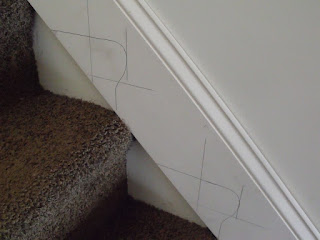
This recipe is my own creation. It's really very easy and the flavors are both complex and comforting. The end result is comfort food that's not totally over-the-top. Country ribs aren't actually ribs, but rather a cut of blade steak or similar. They're both cheap and exquisite when slow cooked or braised. I used both a saute' pan and a chef's pan for this dish rather than a large roaster and I found both cooking and clean up to be much easier. Basically, you want a larger skillet for vegetables and a smaller, stove-top-safe pan for the pork.
Serves 2
Ingredients
2 large "country" ribs (I selected slightly thicker cut "ribs")
3 medium parsnips, peeled, cut into 3" pieces
2 large carrots, peeled, cut into 3" pieces
1 large onion, peeled, cut into 2" wedges
1 winesap apple (or granny smith), cored and cut into 6 wedges
4 small sprigs fresh rosemary
1/2 cup dry white wine
12 oz. home made chicken stock, divided
salt and pepper, to taste
1 tsp arrowroot in 3T water, stock or white wine.
3T olive oil
Pre-heat the oven to 350'F. Lightly oil both pans. Salt and pepper the country ribs and place bone-side down (if there is a bone side), or with the fattiest side up in the smaller pan. Arrange the rosemary on, under and around the pork. Place a few of the carrot, parsnip, and onion pieces around the pork. Add white wine and about 6 ounces of chicken stock to the pan. Heat on the stove until the liquid is hot and then place in the oven. Set your timer for 1 hour.
Toss the remaining vegetables with oil, salt, and pepper in the saute' pan. Lightly oil the apple wedges. When the timer goes off, add the apples to the pork pan, turn the pork, and place on the top rack. Place the vegetable pan on the bottom rack. Set the timer for 1/2 hour and increase the temperature to 375'. After 30 minutes, toss the vegetables so that they brown evenly, and turn the pork again. Return to oven and increase temperature to 425'. Set timer for another 30 minutes (Note: the timing is not critical. The idea is to move the meat and vegetables around so that they brown evenly and/or stay moist. I just find that the timer helps keep me on task so I don't forget).
Warm the plates (I use the microwave for 2 minutes). When the pork and vegetables are done remove pans from the oven. Keep the vegetables in the pan to stay warm. Place the pork pan on a burner and place the country ribs on plates along with the cooked apples and vegetables that were with the pork. There may be some sticking. Plate what you can, leave what you can't. Pour or spoon off any excess fat. Turn the heat up to high-medium and add the remaining stock. Bring to a boil and scrape the bottom of the pan loosening any brown bits and remaining apple or vegetable pieces. When the stock has reduced to about 6 tablespoons (about 5 minutes), add the arrowroot slurry. Stir and simmer for 10 seconds.
Plate the remaining vegetables and spoon the sauce around the pork.
Serve with a fruity zinfandel or Pinot Noir.
(BTW, if you are new to this blog, we have a fairly robust collection of recipes interspersed with our how-to projects. Find them here.











































